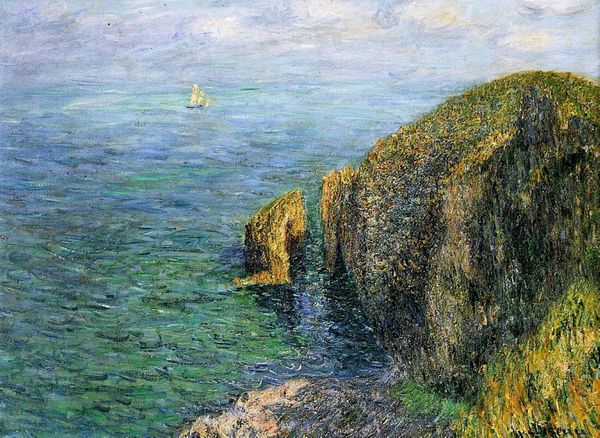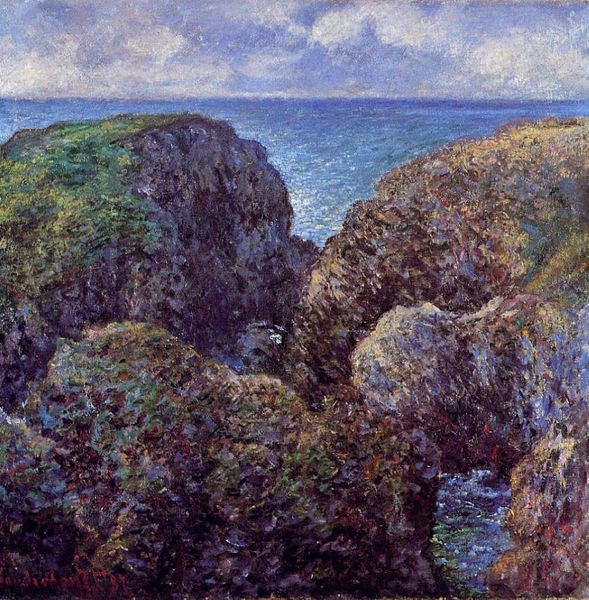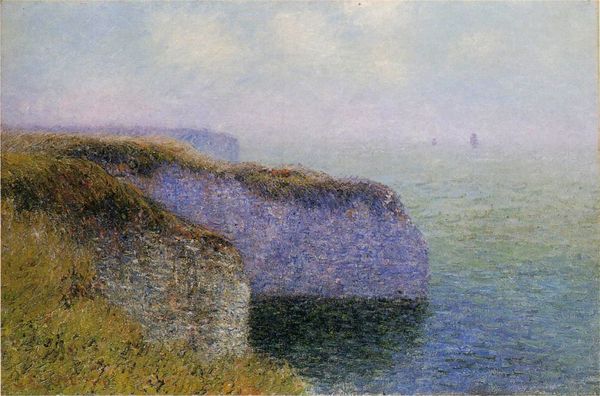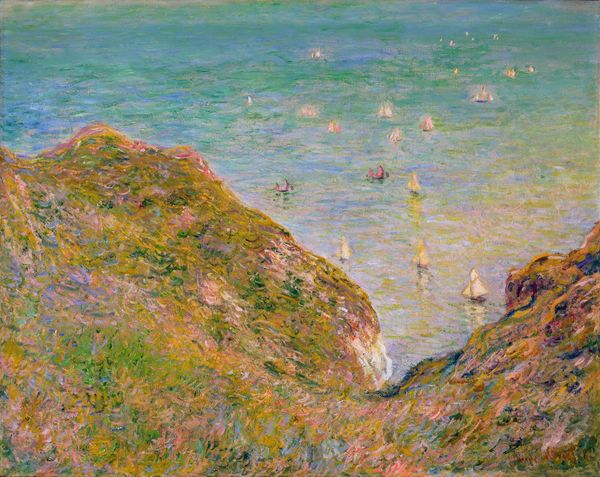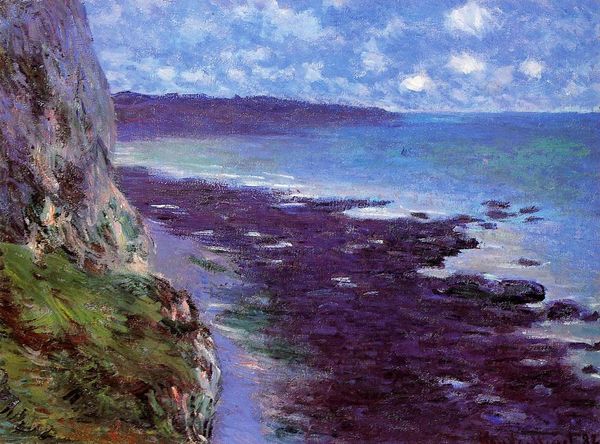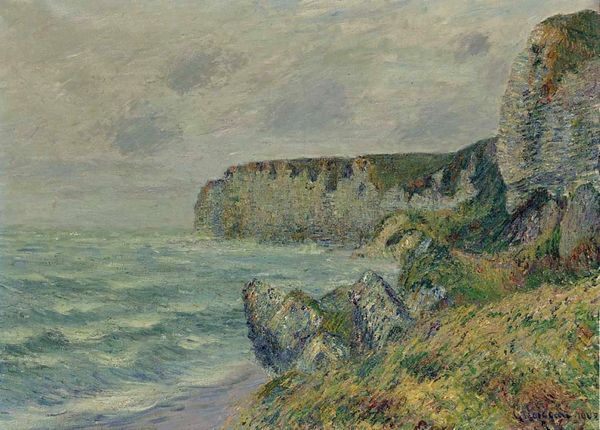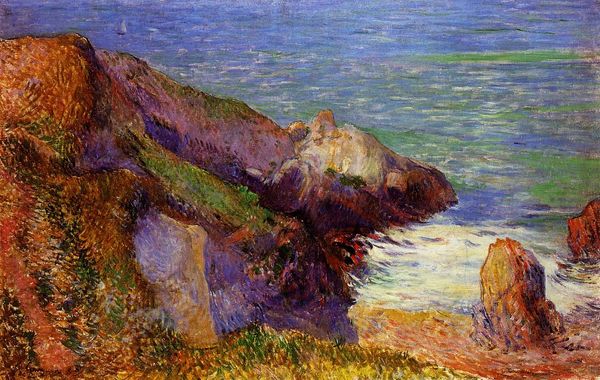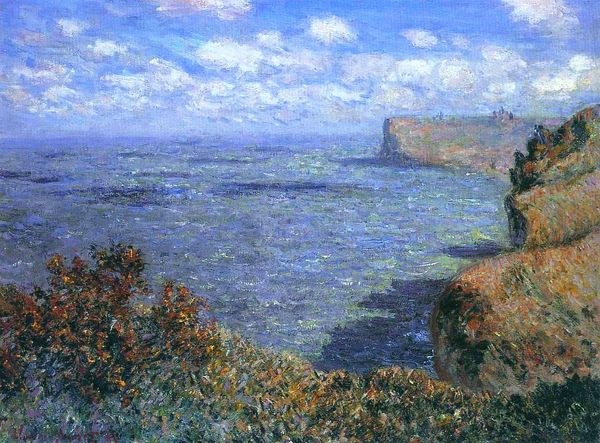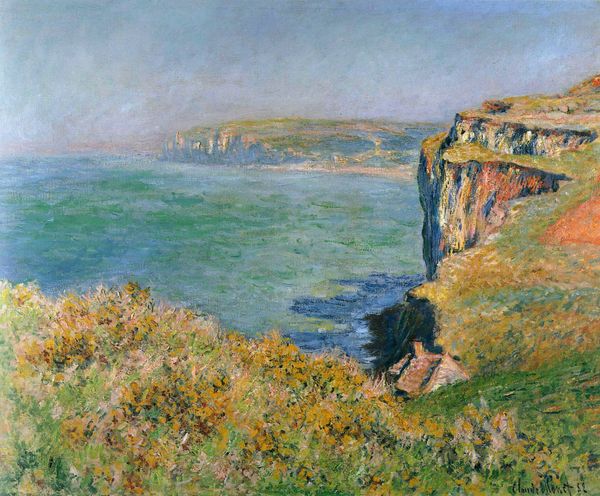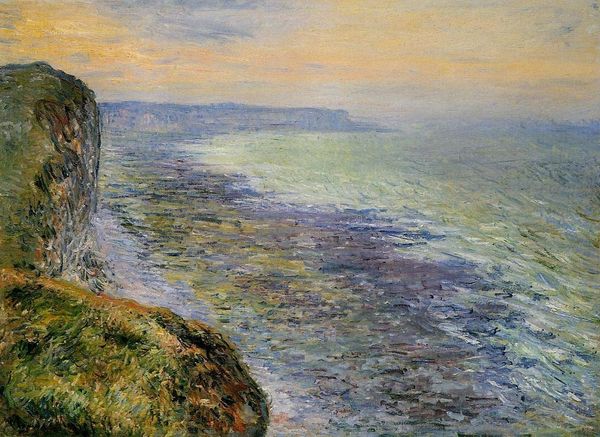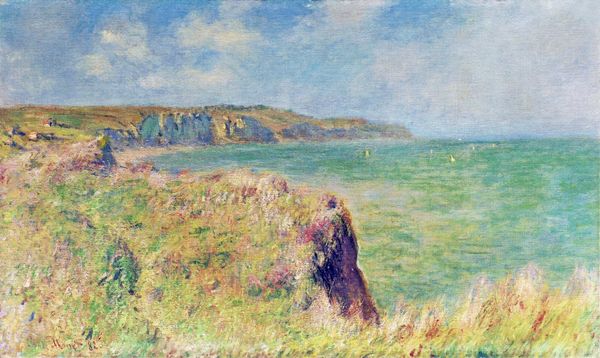
Copyright: Public domain
Editor: This is Gustave Loiseau's "Cliffs of Puy," painted in 1901. It's an oil painting, and it gives me such a serene, almost melancholic feeling. What do you see in this piece? Curator: I see a potent representation of land ownership and its embedded colonial history. Consider that this "plein-air" Impressionist landscape isn't just about capturing a pretty scene. Whose land is being painted? Who had access to this view and the leisure to contemplate it? Editor: I hadn't thought of it that way. I was focused on the colours and the light. Curator: Exactly! Loiseau, like many Impressionists, focused on light, but that focus can inadvertently erase the socio-political landscape. Who benefits from this seemingly apolitical depiction of nature? Consider also, how landscape paintings have historically functioned as affirmations of territorial possession. Editor: So, it's about unpacking the unspoken power dynamics? Curator: Precisely! What happens if we view the brushstrokes as a subtle assertion of control, a way of visually possessing the land through artistic representation? The hazy distance, the very "impression" could then read as a veiled attempt to naturalize an uneven playing field, to paint over a complicated history with strokes of pleasing light. Editor: That gives me a lot to consider. I was appreciating the style, but I see there's much more beneath the surface. Curator: Yes. This invites a vital inquiry: Can we truly appreciate art without interrogating the power dynamics inherent in its creation and reception? Editor: Definitely food for thought. It’s important to broaden how we appreciate art beyond aesthetics alone. Thanks for opening my eyes.
Comments
No comments
Be the first to comment and join the conversation on the ultimate creative platform.
